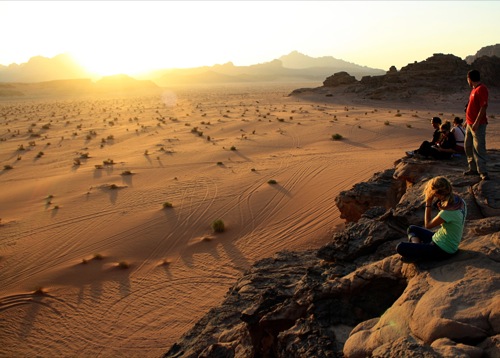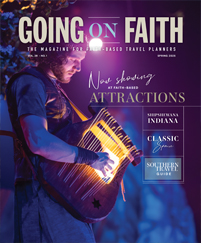
Surrounded by sand, reeds and wild berries, I half-expected to see John the Baptist — clad in his camel skins and wild hair — around every corner. Here, on the lowest place on Earth, lies Bethany Beyond the Jordan. Though it may seem a simple site to the casual observer, this is where John famously baptized Jesus, and Christianity began.
“This is where Jesus started his ministry,” said Rustom Mkhjian, assistant director at the site. “This site is very much like how it was during the time of Jesus. That is one thing we take care to protect. We even still have the same plants mentioned in the Bible.”
Watching the Jordan River slowly moving by, I felt truly blessed to be able to experience this emotive site and all of Jordan’s biblical places. I visited the country in September as a guest of the Jordan Tourist Board, and the trip through the welcoming country brought the pages of the Bible, from Jesus’ time all the way back to the Old Testament, to life.
A quiet house
“Jordan is like a quiet house in a noisy neighborhood,” said Kamel Jayousi, the tour guide who accompanied our group. “People see the Middle East as one package, but Jordan is a peaceful country. The stability of Jordan helps the entire Middle East.”
I was first introduced to the country in its modern capital of Amman. Limestone buildings cover the ever-growing city, with hints of its Roman past visible on the top of the town’s Citadel. The expansive view of Amman from the Citadel illustrates why this prime spot has been inhabited since as early as 4000 B.C.
Now protected as a historic site, the Citadel displays artifacts from the Bronze, Iron, Neolithic, Roman and Byzantine eras. I wandered through the remains of a Roman temple with restored columns and three surviving fingers from a giant statue of Hercules.
I visited much more extensive ruins at the expansive Roman city in Jerash and the Hellenistic-Roman city of Gadara in Umm Quais. Located near the borders between Israel and Syria, Gadara was the biblical city where Jesus performed the miracle of the possessed swine.
After I heard the Scripture reading about the miracle, I wasn’t sure whether to focus on the impressive rows of standing columns, the basalt stone theater or the scenic mountainous view below. While walking down the Main Street of the ancient city, I was amazed that the ruts in the streets were made by the original Roman and Greek carriages.
The next morning, I attended a Melkite church service to glimpse an example of Christianity in Jordan. The service had an English translation booklet, so I could follow along with the traditional prayers and songs.
Father Nabil Haddad, head of the church and founder of the Coexistence Center, spoke with my group afterward to welcome us and discuss Christianity in Jordan. He spoke with such passion and feeling, I couldn’t help but be moved by his words.
“What makes Jordan very unique is its model of coexistence,” said Haddad. “Christians here are highly respected by the government. I believe it is the calling of all Christians to reach out and be the bridge between cultures.”
After his inspiring words on tolerance, I followed his advice by exploring the inside of a mosque. The King Abdullah Mosque’s design draws your eye upward to the enormous dome covering most of the mosque. Koran verses inscribed on the walls in gold create a striking effect.
“When you pray in Islam, you pray toward Mecca,” said Jayousi. “That is why the apse shows the direction of Mecca. But if you pray toward any direction, it’s okay because God is there.”
That evening, I relaxed at Wild Jordan, a restaurant that serves mostly organic, local food from Jordan. From the restaurant, I surveyed the views of Amman at night while listening to the occasional harmonic songs during the call to prayer.










